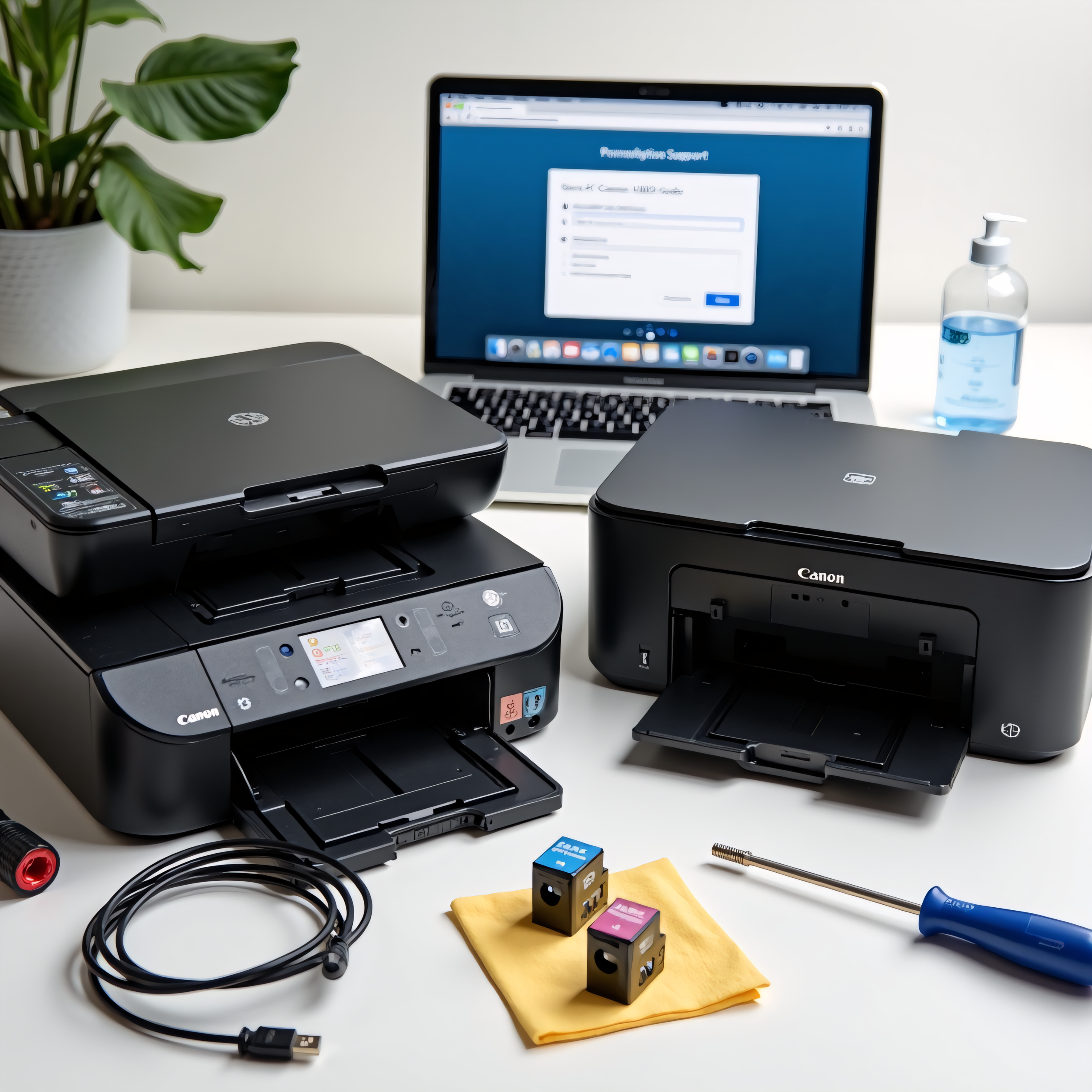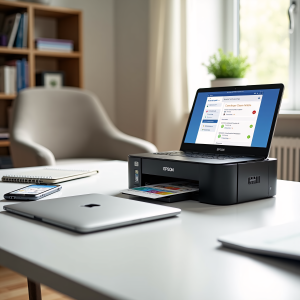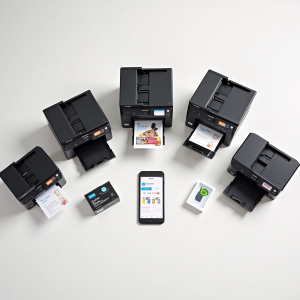What Printer Drivers Are and Why They Matter
At their core, printer drivers act as translators between your computer’s operating system and your Canon printer. When you send a print job, the operating system doesn’t “speak” the language of your printer. The driver takes the data from your application (Word, PDF viewer, etc.) and converts it into a format the printer understands – instructions for where to place toner or ink, how fast to move the print head, and so on. Manufacturer-supplied drivers are tailored to the specific features of your printer model, offering the widest range of functionality. However, they can sometimes be problematic with older operating systems or specialized software. Generic drivers, like PCL6 and UFR II, offer a more universal approach, prioritizing compatibility over model-specific features. Think of it like this: a manufacturer driver is a custom-tailored suit, while a generic driver is a well-fitting off-the-rack option. Both get the job done, but one offers more precision. Without the correct printer drivers, your Canon device is essentially unusable.
Understanding PCL6
Printer Command Language 6 (PCL6) is an established page description language developed by Hewlett-Packard, but widely supported by many printer manufacturers, including Canon. It’s a robust and versatile language that’s been around for decades, making it exceptionally compatible with older systems and software. Benefits of PCL6 include its broad compatibility, relatively small file sizes (leading to faster print spooling), and support for advanced features like color management and font embedding. However, PCL6 can be more complex to troubleshoot and may not fully utilize all the features of newer Canon printers. It’s an excellent choice when you need to print to an older system, a legacy application, or when you’re experiencing issues with the full-featured Canon driver. If you require a driver that will work across a multitude of platforms, PCL6 is a strong contender.
Understanding UFR II
Canon’s Universal Printer Driver II (UFR II) is Canon’s proprietary page description language. It’s designed to provide a balance between compatibility and functionality, specifically optimized for Canon printers. UFR II generally offers better performance and utilizes more of the printer’s capabilities compared to PCL6, especially on newer Canon models. Advantages include streamlined installation, improved print quality, and support for features like secure printing and job accounting. However, UFR II might not be as universally compatible as PCL6, particularly with older operating systems or non-Canon hardware. Choosing between PCL6 and UFR II often depends on your specific needs: if compatibility is paramount, PCL6 is a safe bet; if you want to maximize your Canon printer’s performance and features, UFR II is usually the better option. Looking for ways to enhance your UFR II experience?
Installing Canon Generic Plus PCL6 and UFR II Drivers
The installation process is similar for both drivers. First, you’ll need to download the appropriate driver from the Canon support website (https://www.usa.canon.com/support). Use the “Search by Printer Model” tool to locate your device and access the dedicated download section. During the installation, you’ll typically be prompted to select the printer model. Choose “Generic” or “Universal” from the list. The installer will then guide you through the remaining steps. It’s crucial to restart your computer after installation to ensure the driver is properly loaded.
Here’s a simplified step-by-step guide:
- Download: Visit the Canon support website and locate the “Generic Plus PCL6 driver” or “Generic Plus UFR II driver” specific to your operating system.
- Run Installer: Double-click the downloaded file to launch the installation wizard.
- Accept Terms: Agree to the license agreement.
- Select Driver: When prompted, choose the “Generic” or “Universal” printer model option.
- Complete Installation: Follow the on-screen instructions to finish the installation process.
- Restart: Reboot your computer for the changes to take effect.
Detailed, illustrated guides can be found on various tech support websites. You can also find helpful video tutorials online to visually guide you through the process.
Troubleshooting Common Issues
With PCL6, common issues include garbled text, incorrect font rendering, and color inaccuracies. These can often be resolved by adjusting the driver settings – checking resolution, color profiles, and paper type – ensuring the correct paper type is selected, and updating the printer firmware. UFR II issues often relate to connectivity problems or incomplete installations. Try reinstalling the driver, checking the USB cable (if applicable), and verifying that the printer is properly configured in your operating system. If problems persist, consulting the Canon support forums or reaching out to a qualified technician might be necessary. Proper driver maintenance is pivotal to avoid these issues.
Compatibility List & Considerations
Canon generic plus drivers are generally compatible with a wide range of Canon laser printers, particularly those in the imageRUNNER and LBP series. However, compatibility can vary depending on the specific model and operating system. *Always* check the Canon support website for the latest compatibility information. Key considerations include your operating system version (Windows, macOS, Linux), the printer model, and the software you’re using to print. Consider your system’s architecture – 32-bit or 64-bit – when downloading drivers.
Alternatives to Generic Plus Drivers
If generic drivers don’t resolve your printing issues, consider downloading the latest official drivers from the Canon website. Third-party universal print drivers, like those offered by Universal Print Driver, can also be a viable option. Cloud printing services offer another way to bypass driver issues altogether, although their functionality and security should be carefully evaluated. If you’re building a networked printing solution, explore print server options.
Frequently Asked Questions
Q1: What’s the difference between a Canon PCL6 driver and a UFR II driver, and which should I choose for my office printing?
Choosing between Canon PCL6 and UFR II drivers depends on your network environment. PCL6 is widely compatible and generally good for basic printing needs, leveraging the Printer Command Language. UFR II, however, is Canon’s proprietary language, often offering better performance, especially with complex documents, and superior rendering quality on compatible Canon printers. Consider UFR II first; if compatibility issues arise, fall back to PCL6.
Q2: I’m getting a “printer driver not available” error. Should I reinstall the Canon Generic Plus PCL6 or UFR II driver?
A “printer driver not available” error often indicates a corrupted or missing Canon printer driver. Before reinstalling the Generic Plus PCL6 or UFR II driver, ensure the printer is connected and online. Try restarting both your computer and the printer. If the problem persists, a fresh driver installation is often the solution, downloading the latest version directly from Canon’s support website.
Q3: Can I use a Canon Generic Plus driver like PCL6 on any Canon printer model? What are the limitations?
Canon Generic Plus drivers (like PCL6 and UFR II) aim for broad compatibility, but they aren’t a one-size-fits-all solution. While they work on many models, you might lose access to printer-specific features like advanced paper handling or color calibration. It’s best to use the specifically designed driver for your Canon printer model when available to maximize functionality.
Q4: My documents print very slowly using a generic Canon driver. How can I improve printing speed with PCL6 or UFR II?
Slow printing with a generic Canon driver can occur due to resource limitations. Ensure you have the latest version of the PCL6 or UFR II driver installed. Check your printer settings for duplex printing or high-resolution options, as these can significantly impact speed. Also, a direct USB connection, if possible, can bypass network bottlenecks for faster printing.
Q5: What are the advantages of using Canon’s UFR II driver over installing a PostScript driver on my Canon printer?
While PostScript is a powerful page description language, Canon’s UFR II driver is tailored specifically for Canon printers, optimized for their hardware. This often results in faster processing and superior print quality, especially with graphically rich documents. UFR II can also streamline workflow in managed print environments, offering features PostScript might lack for Canon devices.
Q6: Where can I consistently find the most up-to-date Canon Generic Plus PCL6 and UFR II drivers for my specific printer model?
The most reliable source for Canon Generic Plus PCL6 and UFR II drivers is the official Canon support website (https://www.usa.canon.com/support). Use the “Search by Printer Model” tool to locate your device and access the dedicated download section. Avoid downloading drivers from third-party websites to ensure security and compatibility.
Conclusion: Mastering Your Canon Printer Drivers – PCL6 & UFR II
Navigating the world of printer drivers can seem daunting, but as we’ve explored, understanding the nuances between Canon’s PCL6 and UFR II options is key to unlocking optimal print quality and resolving common issues. We’ve seen how both drivers serve as vital translators between your computer and your Canon printer, but differ significantly in their architecture and ideal use cases. PCL6, with its broader compatibility and established history, is often a solid choice for general printing needs, particularly when working with older software or environments. Conversely, UFR II shines with its resource efficiency, superior rendering of complex graphics, and enhanced security features – making it a preferred option for modern workflows and demanding print jobs.
Choosing the right driver isn’t a one-size-fits-all solution. Factors like your operating system, the specific Canon printer model, the complexity of your print jobs, and your network environment all play a crucial role. Don’t hesitate to experiment with both drivers – installing them side-by-side allows you to quickly assess which delivers the best performance and output for your specific needs. Remember to always consult Canon’s official website for the latest driver updates and compatibility information, as driver versions and supported features evolve over time.
Looking ahead, the trend is leaning toward more streamlined, integrated printing solutions. Cloud printing, combined with increasingly sophisticated universal print drivers, will likely reduce reliance on manually installed and configured drivers. However, understanding the fundamentals of PCL6 and UFR II remains vital for troubleshooting and maximizing the potential of your Canon printer. Furthermore, expect to see ongoing improvements in driver security and features designed to address emerging threats and support evolving printing technologies.
Ready to unlock the full potential of your Canon printer? Don’t let driver issues slow you down. We’ve partnered with leading printer support specialists to offer exclusive discounts on professional driver troubleshooting. Click here to check our post on The Ultimate Guide to Printers



